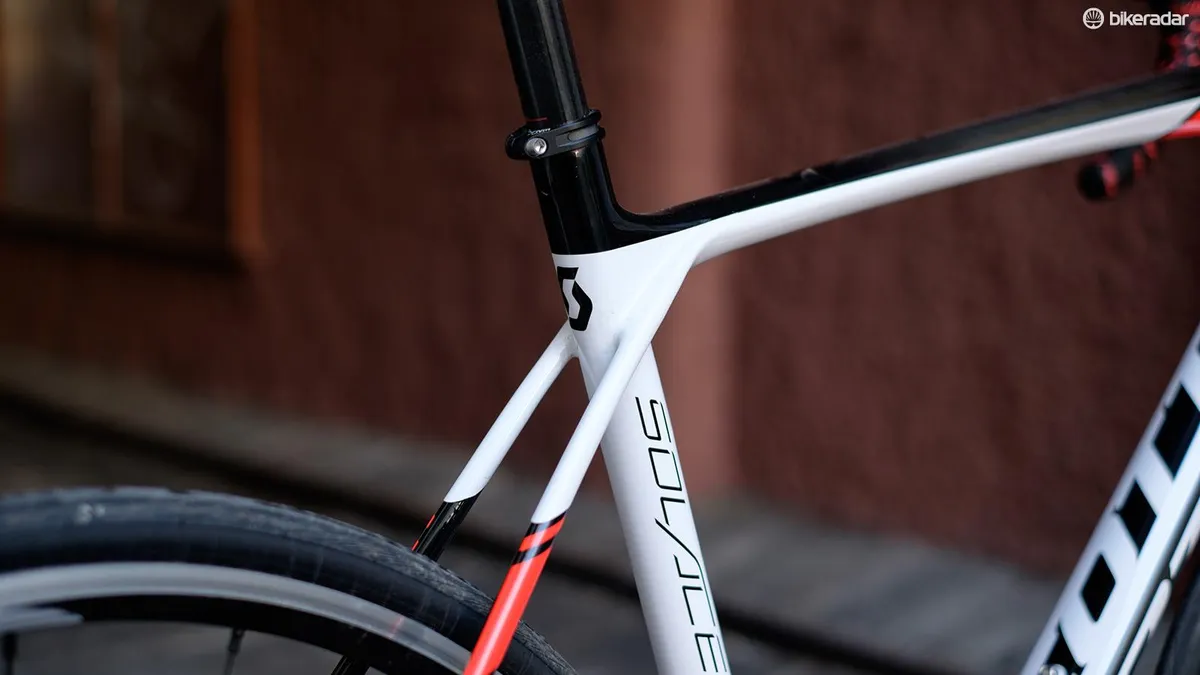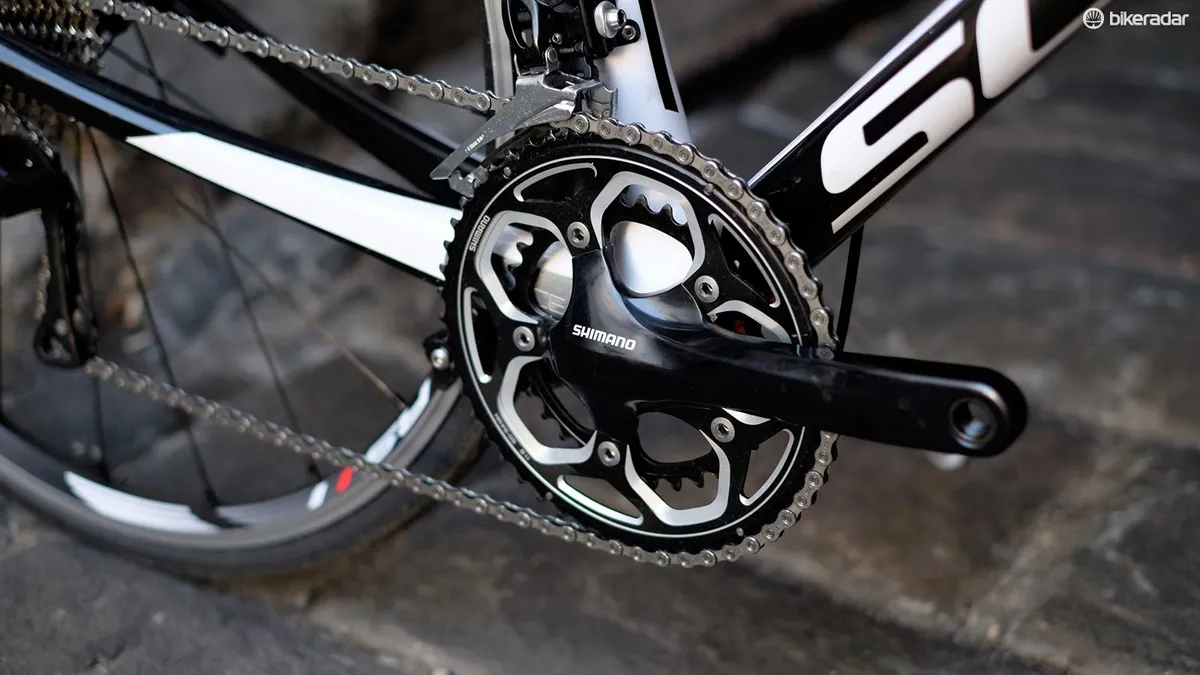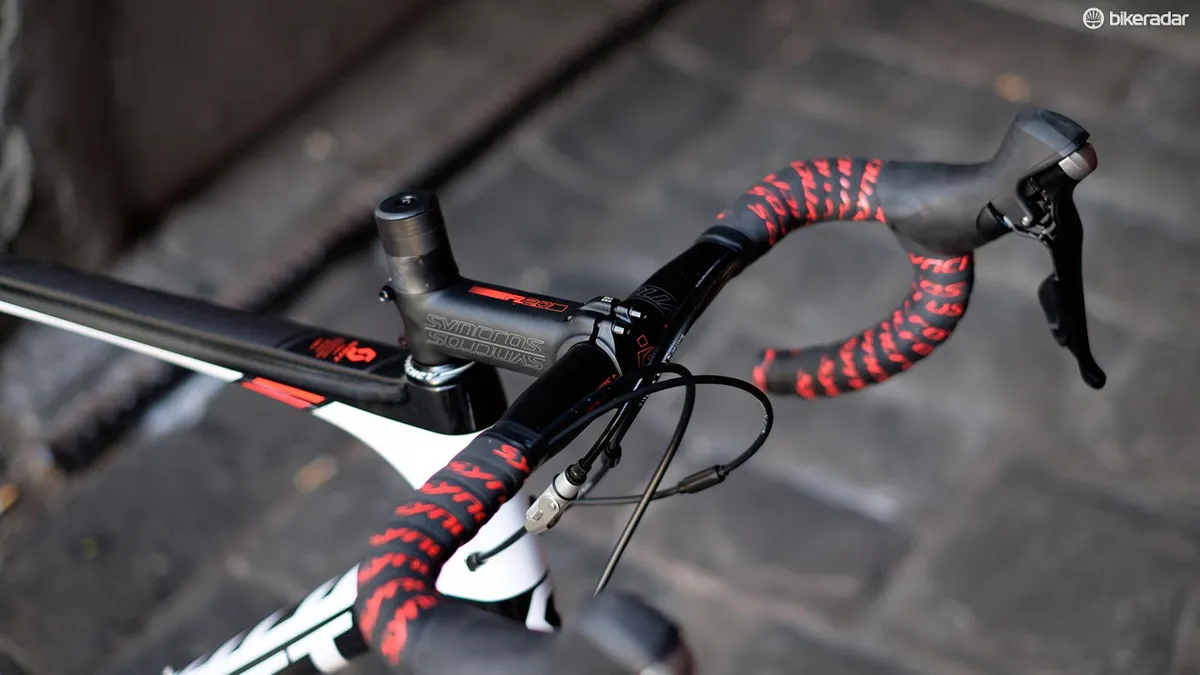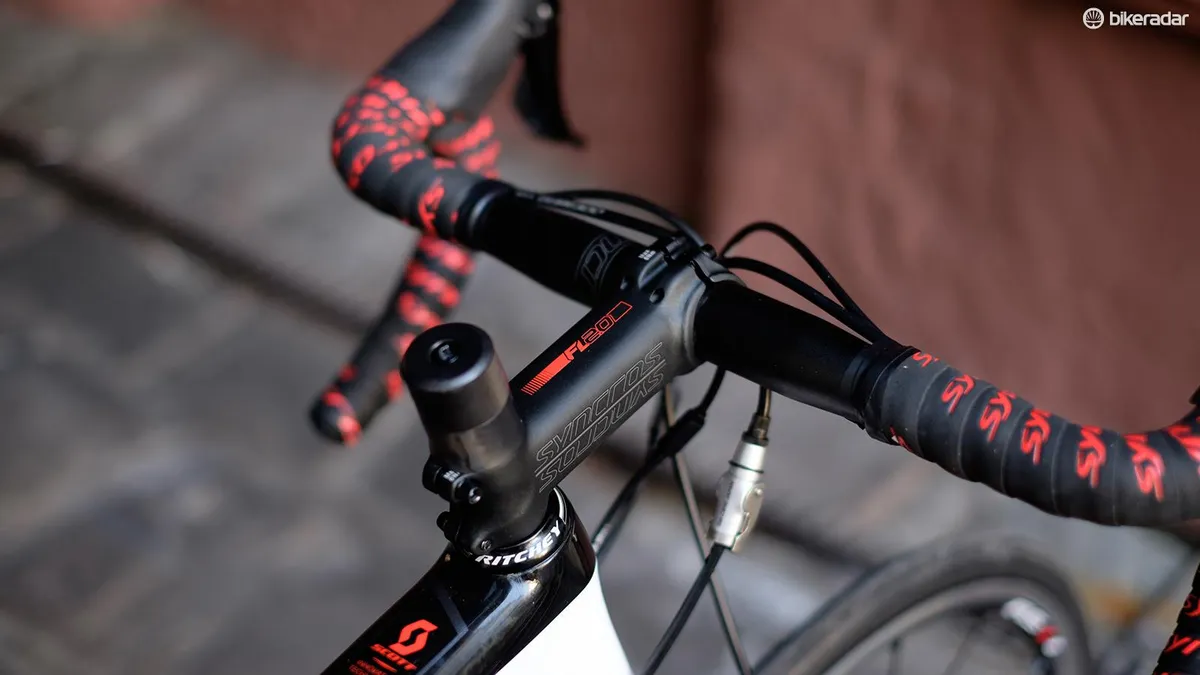As Scott’s endurance model, the dictionary definition of the word solace as, “something that gives comfort, consolation or relief”, and “alleviation of distress or discomfort”, should give some, er, solace to potential customers. But what’s in a name?
Well, in this case of the Solace 20, which made it onto the longlist for our sister title Cycling Plus's 2016 Bike of the Year awards, it’s a full-carbon frame that conforms to some accepted endurance norms.
Up front our large frame has a tall and chunky 185mm head tube that flows in to a flattened top tube and wide down tube, which extends across the full width of the BB86 bottom bracket shell. The seat tube extends well above the top tube junction, and the seatstays are effectively dropped for additional seatpost deflection.
Key to the bike’s ride quality is the rear brake’s positioning beneath the chainstays, allowing the seat stays to taper from sturdy at the dropouts to very slim at the top, and they’re bridgeless, freeing them up to flex more freely. Up front, the carbon fork’s dropouts are swept backwards in a similar way to those on Trek’s Domane, and for the same flex-inducing reason, by increasing the fork’s effective curve.
Split personality
Scott designed the frame with a 'comfort zone' and a 'power zone'. The fork and seatstays largely define the former, with the head tube, beefy down tube, bottom bracket and big, boxy asymmetric chainstays that curve upwards all taking care of efficient delivery – though the upswept chainstays do have a foot in both camps.
The cables are routed through the head tube, with the rear derailleur cable exiting neatly from the rear of the dropout. The rear brake has an inline cable adjuster and quick release just below the bar to ease wheel removal.
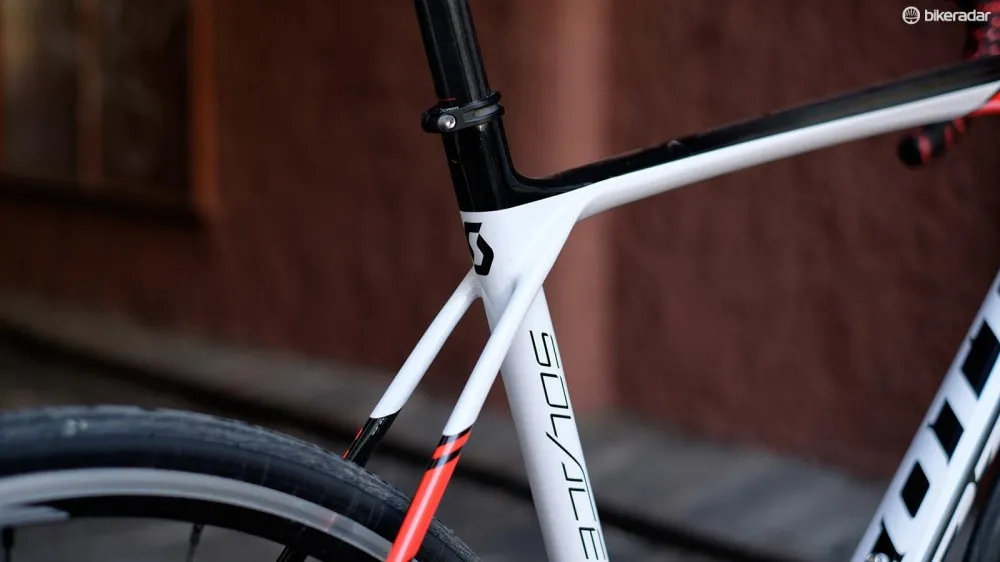
The bridgeless tapered seatstays provided a floated rear-end feel
There’s a mixture of componentry comprising mainly Shimano 105, with an 11-32 cassette, plus a non-series S500 compact crankset, and a Tektro 741 direct-mount brake beneath the chainstays. Brake balance adjustment for the rear isn’t too difficult with the bike inverted, and lever feel is quite good. A built-in chain catcher should avoid troublesome chain drops from the crankset, and the alloy Syncros cockpit has a shallow compact drop and sturdy stem.
Slim carbon seatposts are a surefire way to increase seated comfort. Matched to an endurance machine with 25mm tyres, we expected a semi-suspended feel, which to be fair, was mostly what we found.
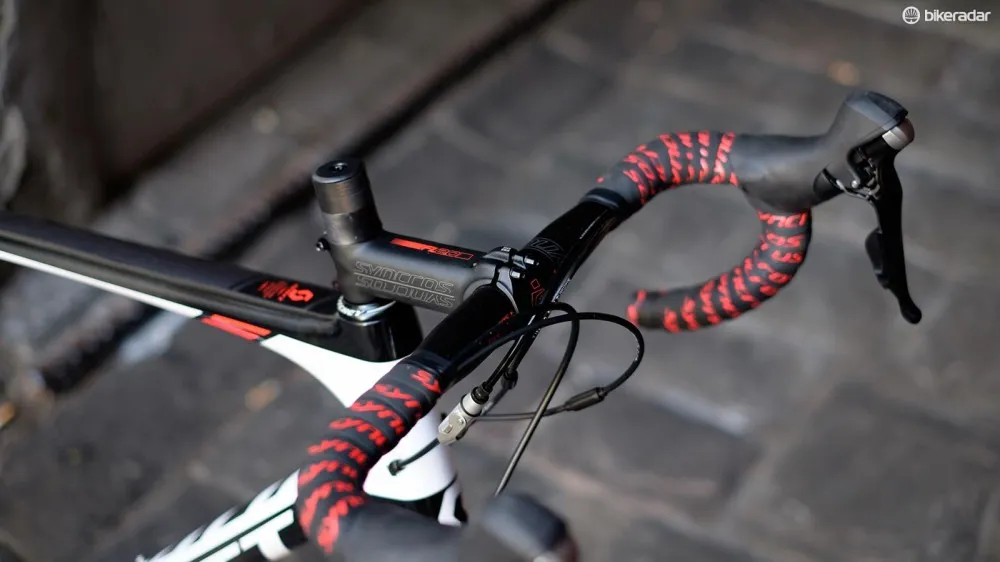
The cables are routed through the head tube
The Solace does have a harder edge though, as although the rear end soaks up road corrugations as well as most of the competition, the front end was a bit less forgiving. That beefy head tube’s stiffness creates great steering precision, but maybe also passes a little more vibration through to the fairly unforgiving Syncros alloy bar, which doesn’t damp it, leaving you with a mismatched feeling between back and front. A cockpit swap would probably improve this, and is a straightforward task.
Room for upgrading
When changes of pace are called for, the Solace feels lively and keen to make progress, its 405mm chainstays aiding efficiency. The Shimano S500 crankset and RS11 wheelset perform admirably, although you’re often left wondering how much better the frameset could be with some classier drapery.
Schwalbe 25mm Duranos are a robust choice, but roll and grip well, and shrug off cuts better than many. A small shelf behind the bottom bracket does limit tyre clearance a little – there’s plenty of room for 25s, and probably 28mm rubber too, but it would be tight.
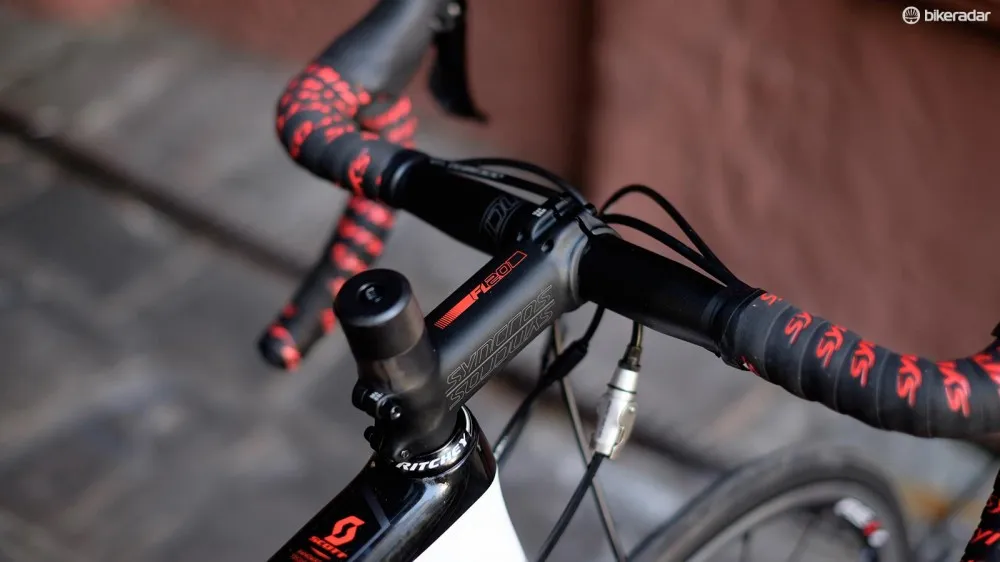
We found the Syncros bars a little unforgiving
With its more relaxed 72.5 degree head angle, the Solace is a stable ride, but still feels race-bike sharp through the bends. It’s an ideal combination, and backed up with its compliant frame, largely fulfils its endurance potential.
With a compact crankset up front and 11-32 cassette, there are few climbs out of reach for this bike, with an almost 1:1 lowest ratio. However, the wide cassette does cause some large jumps between gears when driving along on the flat, which occasionally prevents a comfortable cadence.
While the wheels won’t set the world alight uphill, they're solid and true when barrelling down again. The main problem then is stopping, as the rear brake isn’t all that powerful when called on at speed, feeling spongy and lacking bite.
We had no cause for complaint with the Syncros saddle throughout our testing time, which is a good thing. Overall, the frameset clearly shines, and even though it feels hindered by a couple of components, this has potential to be a fine everyday ride. The question is where you want to compromise or upgrade.
null


